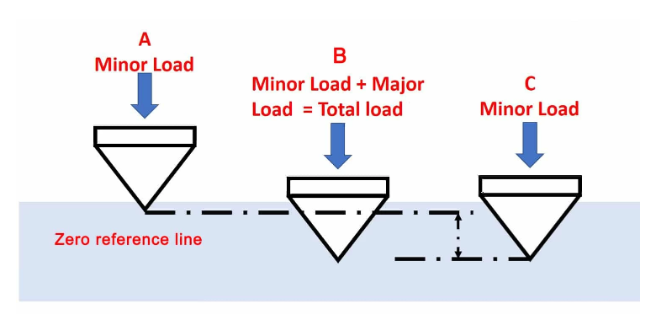Basic of First Aid| ABC Approach
Basic first aid refers to the immediate and temporary care given to a person suffering from an injury or illness until professional medical help arrives. Possessing basic first aid skills is crucial, as it can save lives, prevent further harm, and empower individuals to respond effectively in emergencies.
Steps to Follow in Basic First Aid
First aid is the best way to deliver immediate emergency treatment by bystanders. When administered correctly, it can significantly reduce the severity of injuries and save lives. Here are the basic rules to follow when providing first aid:
Understanding the Priority of Care:
The first step in providing effective First Aid is to assess the situation and prioritise care. This involves ensuring personal safety and assessing the safety of the injured person and bystanders. This first aid training in Norwich is comprehensively categorised on DRSABCD, expanding on the ABCs:
- D – Danger: Assess the scene for any potential hazards to yourself or the victim.
- R – Response: Check for responsiveness and consciousness of the victim.
- S – Send for Help: Call for emergency medical assistance immediately.
- A – Airway: Open the airway and remove any obstructions.
- B – Breathing: Check for breathing and provide rescue breaths if needed.
- C – Circulation: Control any bleeding and check for a pulse.
- D – Disability: Assess any potential injuries or disabilities.
ABCs of First Aid:
This is the most essential step to take in emergencies, especially during severe accidents:
- A for Airway: Check for a response and ensure the person’s airway is clear. If you are conscious and breathing normally, proceed to the relevant steps. If the person is unconscious or breathing is compromised, check for obstructions like food or objects; remove them to allow normal breathing. If unconscious, also gently tilt the head backwards to open the airway carefully.
- B for Breathing: Check for chest movements. Look, listen, and feel for signs of breathing, such as the chest rising and falling, sounds of breathing, and air movement. If breathing is normal, carefully turn the person to align the head, neck, and body. If the person is unconscious and not breathing, then begin CPR, which involves giving compressions with rescue breaths.
- C for Circulation: Assess the person’s circulation by feeling the pulse at the neck (carotid artery) or wrist (radial artery). If no pulse is detected, continue with CPR to maintain circulation. Give 2 rescue breaths following 30 compressions and continue the procedure until the person responds or professional help arrives
First Aid in Wound Care:
If a person is severely injured or experiencing heavy bleeding, the first step is to call for emergency assistance and take measures to stop the bleeding, preventing further blood loss. If gloves are available, use them, or if possible, wash hands before using them to reduce infection risk.
To stop the bleeding, first remove anything that is embedded in the wound and then apply direct pressure using a bandage or clean cloth. In areas where ice is available, apply it to the wound.
Once the bleeding stops, gently clean the wound with mild soap, water, or any antiseptic available. Cover the wound with a sterile bandage to prevent dust and elevate the injured limb, if possible, to minimise swelling.
First Aid for Fractures and Sprains:
In the case of fractures or sprains, immediate and appropriate first aid is crucial to alleviate pain, minimise swelling, and prevent further injury before seeking professional medical assistance. For fractures, prioritise safety and avoid attempting to realign the bone. Immobilize and stabilise the injured area immediately using rigid materials such as boards or folded clothing. Elevate the injured limb and apply ice in a cloth to reduce swelling.
Similarly, for sprains, rest the affected joint or limb and apply ice in intervals. Utilise compression with an elastic bandage and elevate the injured area.
First Aid for Burns:
In the event of a burn injury, appropriate first aid is essential to minimise further damage. First and foremost, ensure the safety of both yourself and the injured person by removing them from the source of the burn.
For minor burns, immediately cool the affected area with running cool water for 10 to 20 minutes and carefully remove tight clothing or jewellery. Cover the burn with a sterile, non-stick bandage or clean cloth, and avoid using ice.
Seek professional medical attention for burns larger than a quarter, burns on the face, hands, feet, genitals, or major joints, or those caused by chemicals, electricity, or inhalation. For severe burns such as third-degree burns, do not use ice; cover the burn with a clean, dry cloth and seek immediate medical help.
Be aware of not using ice or very cold water on burns to avoid hypothermia, and avoid using lotions or creams.
First Aid for Shock:
Immediate first aid measures are crucial to stabilise the condition of the person experiencing any type of shock until professional medical assistance arrives. Begin by checking for DRSABCD or any signs of bleeding.
Keep the individual warm by covering them with a blanket, offer reassurance to prevent panic, and avoid giving them anything to eat or drink. Elevate the person’s legs if there is no head, neck, back, or leg injury. It’s better to consult a healthcare provider immediately to prevent any potential damage.
Conclusion:
Having basic training is a valuable skill that everyone should possess. It can significantly impact the outcome of an emergency, contributing to a safer and more secure environment for yourself and those around you. Embracing First Aid basics allows you to mitigate danger and reduce the risk of further damage caused by an injury until medical attention arrives.



